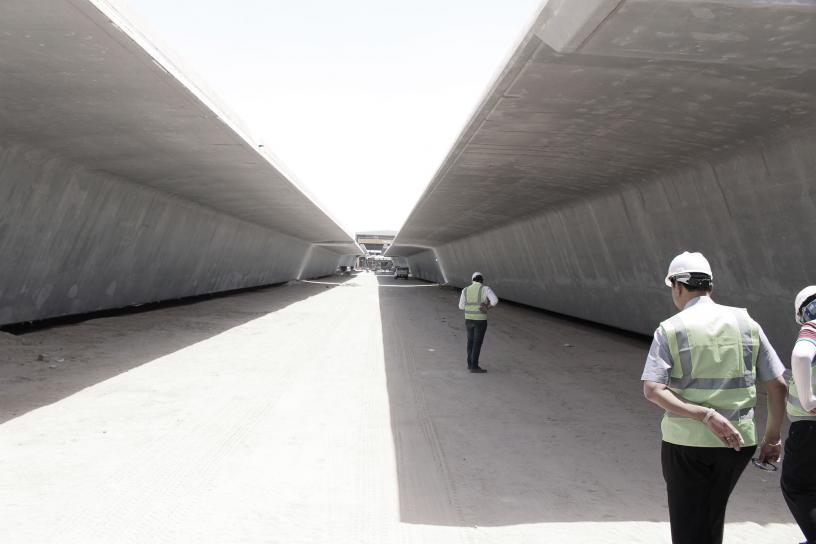The Sheikh Jabar Al Ahmad Causeway
An exciting project for Fibertex Nonwovens, was the supply of 1 800 000 m2 of Formtex® CPF liners, used in the construction of the Sheikh Jabar Al Ahmad Causeway in Kuwait – one of the world’s largest bridge projects.
This 36 km causeway, which connects Kuwait City with the Subiyah region, consists of more than 1 200 concrete pillars and 1 211 bridge elements.
Degradation of concrete structures is normally accelerated by the effects of salt water, high temperatures and increased CO2 levels in the air. Stringent requirements of this project demand a service-life of concrete of at least 120 years.
Formtex® was subjected to rigorous testing in laboratories and was benchmarked against competing products for the durability of concrete, that must be able to withstand impacts from sand storms and salt water.
The solution in this ‘Design-Build-Operate Project’, was to use Formtex® CPF liners in the casting of concrete bridge spans and bridge pillars, to ensure high quality, durability and low maintenance of concrete elements, in a highly aggressive environment.
Fibertex carried out extensive consultancy, teaching and training in Kuwait, prior to the production of concrete. These preparatory activities took place in large production halls in the middle of the desert, where the 60 m long, 25 m wide and 7 m tall bridge elements, were produced.

Facts:
- 1,800,000 m2 Formtex®
- 36 km long concrete bridge
- Named after the deceased Sheikh Jaber Al-Ahmad Al-Sabah
- Total project costs US$ 3 billion
- Construction period: commenced 2013, completed 2018
- 1,200 concrete pillars
- 1,211 bridge elements
- Expected lifetime: 120 years
Contact
Find Contact Person
Find your local contact person for questions regarding concrete applications by choosing your region or country.
FORMTEX®
Long lifetime of concrete structures with Formtex®
Formtex® drains surplus water and air, providing for a denser concrete cover layer without blowholes. The result is increased resistance to degradation from penetration of chloride, water, carbon dioxide and frost/thaw.
